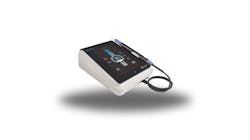Chairside Impact: Leveraging ultrasonics to combat biofilm, calculus, and stains
As a dental hygienist, it is likely these three statements are relevant to you: 1. You practice in a clinical setting; 2. You spend most patients' appointment battling calculus, biofilm, and stain; and 3. Your treatment room is equipped with ultrasonic technology. There is also a high probability that your ultrasonic technology and your smartphone have something in common. Many of us don't optimize the capability of our smartphone, and many dental hygienists don't optimize the capability of their ultrasonic systems.
More Chairside Impact:
Optimizing ultrasonics in the op
For decades, using a Cavitron was synonymous with calculus removal. In fact, when I graduated in the 1990s, hand instruments were the gold standard for scaling and root planing, hygienists had one ultrasonic instrument choice, ultrasonic instruments could not be used subgingivally, and stain removal was not generally considered a function of ultrasonic instruments. However, since I graduated, manufacturers have provided a bigger selection of ultrasonic instruments, and evidence for the use of ultrasonics has evolved beyond the removal of calculus. Today, ultrasonic technology provides greater subgingival utility, including the use of thin, ultrathin, straight, and curved ultrasonic instruments for removal and disruption of biofilm. In fact, a recent systematic review reported on the benefits of hand and ultrasonic subgingival instrumentation, citing both methods were effective in reducing oral inflammation and pocket depths.1 Other randomized clinical trials have also concluded that clinical outcomes using ultrasonic instrumentation are equal to hand scaling but add that ultrasonic technology achieves these outcomes quicker.2-4 One group of researchers also discovered that when equal scaling strokes are applied, ultrasonic instruments remove an average of 50% more active biofilm when compared to hand instrumentation.2
Key variables
Dental hygienists should be excited about the capabilities of ultrasonics, but these instruments are not magic wands. As expectations for ultrasonic technology increase, consider these three things: one insert/tip cannot do it all; not all ultrasonic units are created equal; and technique matters. Digital scanners vary in sophistication, and ultrasonic units should be looked at the same way. Dental burs have distinct characteristics and indications—ultrasonic instruments do, too. Analyzing the diameter, length, shape, and cross section of the active tip of ultrasonic instruments will guide dental hygienists in choosing an ideal option for each debridement need. Proficient ultrasonic technique, combined with the ultrasonic system most suited for your practice, will improve the likelihood of quick, effective removal of biofilm, calculus, and stain, while providing your patients with a positive experience.
Author’s note: To learn how to optimize your ultrasonic systems, please join me in a virtual seminar titled “Say goodbye to biofilm, calculus, and stain: Leveraging ultrasonics as a triple threat.” This virtual seminar will be held live on November 14, 2023, 7:30pm–8:45pm EST. Click here to register.
Editor's note: This article appeared in the September 2023 print edition of RDH magazine. Dental hygienists in North America are eligible for a complimentary print subscription. Sign up here.
References
- Suvan J, Leira Y, Moreno Sancho FM, Graziani F, Derks J, Tomasi C. Subgingival instrumentation for treatment of periodontitis. A systematic review. J Clin Periodontol. 2020;47(Suppl 22):155-175. doi:10.1111/jcpe.13245
- Johnston W, Rosier BT, Carda-Deiguez M, Al-Hebshi N, Chen T, Mira A, Culshaw S. Evaluating the microbial impact of hand and ultrasonic instruments in vitro and in vivo effects of instrumentation on in-vitro periodontitis biofilm. University of Glasgow, Glasgow, UK. FISABIO, Valencia, Spain. Komber School of Dentistry, Pennsylvania. Forsyth Institute, Massachusetts. Presented at: IADR/AADR/CADR General Session. 2020. Washington, DC.
- Johnston W, Paterson M, Piela K, et al. The systemic inflammatory response following hand instrumentation versus ultrasonic instrumentation-a randomized controlled trial. J Clin Periodontol. 2020;47(9):1087-1097. doi:10.1111/jcpe.13342
- Hamm C, Dakin L, Lavoie D, Longo AB, Fritz P, Ward PE, editors. Timing of instrumentation use for non-surgical debridement using ultrasonics alone versus ultrasonics and hand instrumentation in generalized advanced periodontitis. Poster. Presented at: The Ninth Conference of European Federation of Periodontology EuroPerio. June 2018. Amsterdam, Netherlands.
About the Author

Dani Botbyl, RDH
Dani Botbyl, RDH, has served as the national clinical educator for Dentsply Sirona for more than two decades. She led the first research team to investigate ultrasonic instrumentation education in dental hygiene programs, and in 2018 was awarded the Canadian Journal of Dental Hygiene Research Award for Best Original Research Paper. Dani has presented hundreds of evidence-based programs and is a faculty member at the Dentsply Sirona Academy in Toronto, Canada.
Updated July 28, 2023
